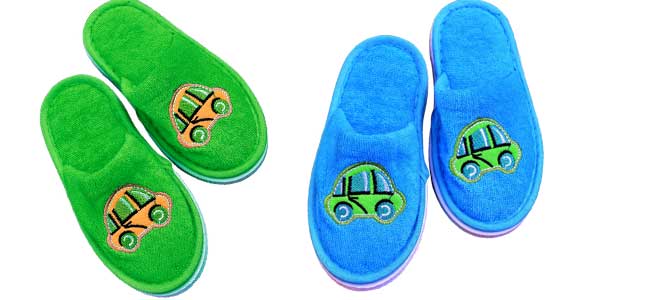There are plenty of rules about driving in the UK and many of us are unsure what the rules on footwear really are. Can women wear heels or should there always be a spare pair of flats in the car? If I’ve been to the beach and don’t want to get sand in my shoes can I drive barefoot? What if I’ve had to leave the house in a rush and still have my slippers on, will I get in trouble?
We’ve put together this article to answer some of the most common questions drivers have about shoes and give you a better insight into what you should wear while driving.
Is it Illegal to Drive Barefoot?
The quick answer is no, it’s not illegal to drive barefoot.
The longer answer is a little more complex and one you should know.
If you are driving after going to the beach and decide to stay barefoot rather than making a sandy mess of your socks and shoes, then your feet might still be wet which could cause them to slip off the pedals. If you do decide not to put your shoes back on in these circumstances you should ensure your feet are thoroughly dried.
Another concern that there is about driving barefoot is that without a shoe the same pressure you apply to the pedal will not have the same braking force as with one on, which you’ll be used to driving in. This is something you should be aware of as otherwise it could cause an accident.
Under Rule 97 of the Highway Code drivers are required to wear ‘footwear and clothing which does not prevent you using the controls in the correct manner’ and depending on how in control of the vehicle you are being barefoot could be seen as not adhering to this rule.
If you are stopped by the police and they consider you not to be in total control of the vehicle, or you are involved in an accident while barefoot then you could be charged with driving without due care and attention.
We recently wrote about the different crimes you can be charged with while driving and in this article we found that driving without due care and attention can land you a £100 on the spot fine as well as three points on your driving licence. If the charge is taken to court then the fine could increase to £5,000 as well as nine points to your licence and even a potential driving ban.
Can I Drive in Just My Socks or Slippers?
Just like driving barefoot driving in socks or slippers is not illegal though it might still get you in trouble.
Again, you could be charged with driving without due care and attention if your lack of shoes causes you to drive erratically or you are involved in an accident.
Although a thick-soled slipper might provide you with as much braking force as a regular shoe, they do not typically have the same grip as the sole of a shoe does so there might still be issues with your foot slipping on the pedal.

Is it Illegal to Drive in Flip Flops?
Flip flops pose an additional risk compared to slippers and other shoes, as they do not have a back. This means that if the sole is particularly bendy then it could get caught under a pedal and stop it from being pushed down as far as it should be which could cause an accident, especially if it impedes the brake.
Just like driving barefoot, in socks or slippers you can be charged with driving without due care and attention and receive a £100 fine and three points on your licence on the spot, and £5,000 and nine points if it goes to court.
If the reason that the accident happens is your footwear then you might also have complications with insurance if any claims are made. It is worth checking with your provider or the policy documents to see if wearing them could void your policy.
Can I Drive in High Heels?
Many people wear high heels in a whole host of different situations and travelling between places and life events often involves driving, which they might do in their heels. Driving in heels is not illegal but just like the other types of footwear we’ve mentioned this could lead to you being charged with driving without due care and attention.
There are problems that driving in high heels have that other shoes do not present.
For example, a stiletto might slip and get caught under a pedal while a chunkier heel will be quite heavy against the pedals so need less pressure to achieve the same rate of acceleration or brake as in a flat shoe, which can make it difficult to judge how much pressure is needed. With platform shoes you have the additional weight of the platform beneath your toes as well.
If you are driving with just the top of the shoe and not the heel on the pedal not only does this make it more likely for you to catch your heel under the pedal but it puts less of your foot against the pedal and reduces the strength you have to push down on it.
Another thing that those who wear heels might find is that because of the additional length the shoes add to their leg they need to move their seat further back from the steering wheel. If this is the case then you should make sure that you can still reach all the controls and adjust your mirrors so you can still see as much of the road as possible.
It’s a personal choice whether you feel comfortable driving in heels and like you are in complete control of the vehicle while driving and it will be up to you to decide if you can drive in heels or need to take them off. One way to solve this dilema is to keep a spare pair of flats in the vehicle so you can change into those when driving.
What Shoes Should I Wear to Drive?
Now that we’ve covered some of the most common misconceptions about driving footwear we think it’s important that you have some general guidelines on sensible shoes for driving.
Driving barefoot or in your socks is advised against unless it is unavoidable and you are in complete control of the vehicle.
You should not drive in shoes that have a really thin or soft sole as this can reduce the amount of force that you can apply to the brake.
Its also recommended that your sole is no thicker than 10mm as this can reduce your awareness of the amount of pressure that you are applying to the pedals.
Your shoes should provide you with enough grip that they do not slip from the pedal and not limit the movement of your ankle or any other part of the foot. They should also be narrow enough that you cannot accidentally press two pedals at once.
What Should I Wear to Drive?
It’s not just your feet that you should consider before you get behind the wheel, but also your clothes.
For long trips we recommend wearing clothes that you feel comfortable in, that won’t restrict your movements in terms of extending your legs to reach the pedals and arms to reach all the controls. As mentioned above the Highway Code states you should wear ‘footwear and clothing which does not prevent you using the controls in the correct manner’.
As part of this, you should avoid clothes that would get in the way, for example very loose or baggy sleeves that could impede your use of the steering wheel or gearstick.

Ultimately it is up to you what you decide to wear, even on your feet, when driving there are no legal restrictions. However, as the driver you must ensure that you are in full control of the vehicle and anything you are wearing, or not wearing, does not impead this.









Leave a Comment